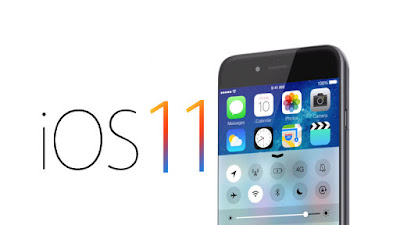The Control Center - it is customizable and there are options to include a wider range of settings. It's no longer split across multiple screens, and 3D Touch integration has expanded, so you can do more without needing to open the Settings app.
The Lock screen - it's been merged with Notification Center. Swiping down on the screen to access notifications now brings up the Lock screen. Today view continues to be available with a side swipe, and everything generally looks the same - there's just no separate Notification Center anymore.
Siri - it has a more natural voice and is more intelligent than ever. Siri learns user preferences and syncs that information across multiple devices, allowing the personal assistant to learn more about you and anticipate what you want. Siri can also translate English into different languages like Spanish and Chinese, and there's deeper Siri integration with Apple Music.
For the iPad - Apple has introduced a host of new features that make it more capable than ever before. A persistent Dock at the bottom of the display a makes it easy to launch and switch between apps, and there's a new App Switcher that's similar to Mission Control on the Mac, letting you see everything you're working on at a glance. For iPad Pro owners, the Apple Pencil does more, and several apps, like Mail and Notes, support inline drawing.
Drag and drop - you drag content like images and links from one app and drop it in another, and on both the iPad and the iPhone, there's a new Finder-style Files app for managing files. Files lists all files stored locally, in iCloud Drive, and in third-party cloud services like Dropbox and Google Drive.
New keyboard features - like a one-handed keyboard on the iPhone and a "Flick" option for typing numbers and symbols more quickly on the iPad, and many of the built-in apps have new functionality.
Notes features - searchable handwriting and document scanning.
Maps - lane guidance, speed limit info, and indoor maps for malls and airports.
Apple Music - includes options to see what your friends are listening to.
HomeKit - supports speakers and there's a new AirPlay 2 protocol that includes multi-room functionality. Do Not Disturb has been expanded to encompass driving, muting notifications while a vehicle is in motion.
iMessage - improved with a new App Drawer that makes it easier to access Messages apps and stickers. Messages is also gaining support for a new person-to-person Apple Pay feature that lets you send money to friends and family right through an iMessage, and iMessages themselves are now stored in iCloud, sync across devices, and take up less storage space.
Photos and videos - take up less space through the adoption of new HEIF and HEVC formats.
The Memories feature in Photos - smarter than ever, and in the Camera app, Portrait Mode and Live Photos have been improved with new capabilities.
The App Store - completely revamped in iOS 11, and there are now two distinct sections for apps and games. There's also a new "Today" view that features new content on a daily basis to make it easier to discover fresh apps and games.
By the way, iOS 11 is now in Beta for developers. You can download it and upgrade to iOS 11 beta to experience these new features. Even though after downloading and upgrading it, you don't get used to it, or some bugs happen, you can also downgrade from iOS 11 to previous iOS 10.3.2/10.3.1.
More Related Article You May Like:
How to Recover Deleted Pictures from Phone >
How to Recover Deleted Text Messages from Phone >
How to Recover Deleted Files from Phone >

It's Very nice , Thanks for sharing
ReplyDeleteiOS App Development Online Course
Thanks for your great and helpful presentation I like your good service. I always appreciate your post. That is very interesting I love reading and I am always searching for informative information like this.Also Checkout: angular 4 training in chennai | angularjs training in chennai | angularjs best training center in chennai | angularjs training in velachery
ReplyDeletesmm panel
ReplyDeleteSmm panel
İş ilanları
instagram takipçi satın al
hirdavatciburada.com
Https://www.beyazesyateknikservisi.com.tr/
Servis
Tiktok hile indir